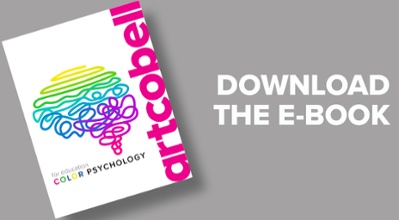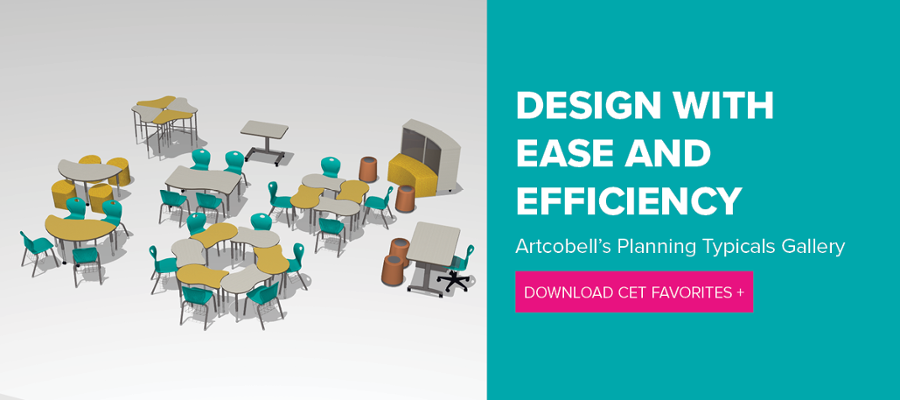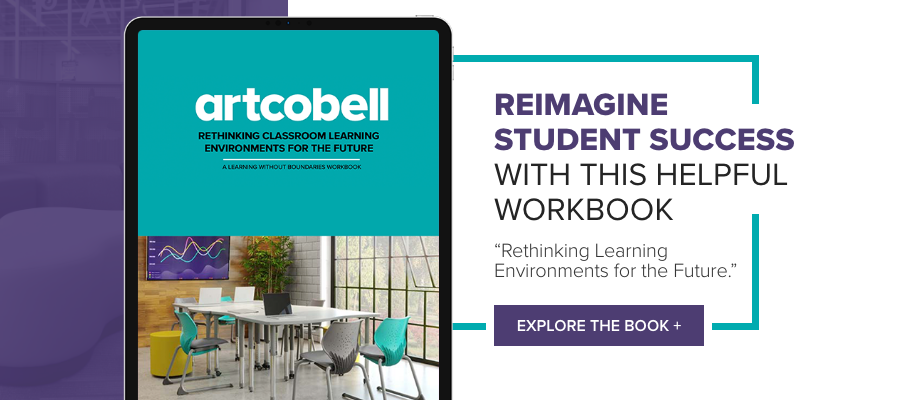Color is believed to be the most important visual experience to human beings (Adams FM, Osgood CE, 1973). Look around. How many colors do you see? Be mindful of how these colors make you feel. If you are in an office environment, do the colors and textures support creativity? Can you concentrate or are you distracted by the color scheme? If you are at home, do the colors make you feel safe, comfortable, and calm?
These types of questions are all too common in interior design for commercial and residential spaces but are often overlooked in education. The same thoughtful consideration should be given to the learning environments that support our future generations.
Jump to...
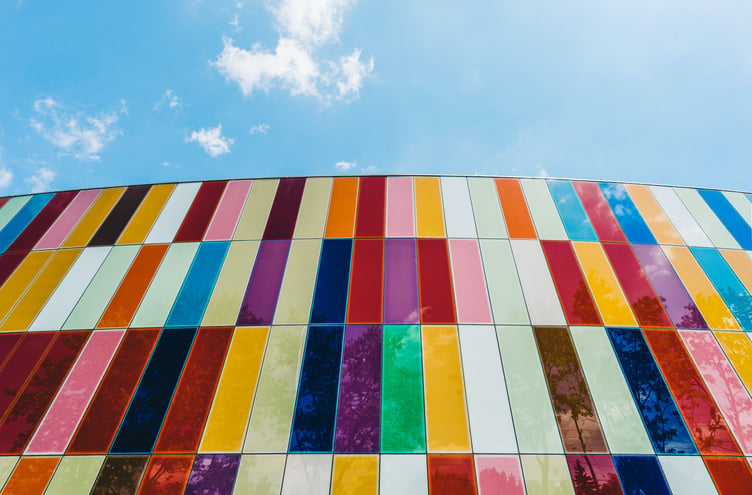
Scientists in the field of color psychology have spent years studying the relationship between colors, attention, memory performance, and psychological effects. Over the next series of blogs, we explore various colors and how they impact student emotions, behavior, focus, and information retention for optimal educational growth.
color psychology of Red
Red is the color of fire and love, so it is associated with energy, danger, strength, power, determination as well as passion, and desire. Because it has the ability to provoke such strong emotions, it should be used thoughtfully in learning environments. Paired with cooler colors, red would be the ultimate energizer!
use red as a stimulant to:
- Encourage creativity
- Stir up conversation
- Improve performance/concentration
- Inspire movement
- Increase alertness
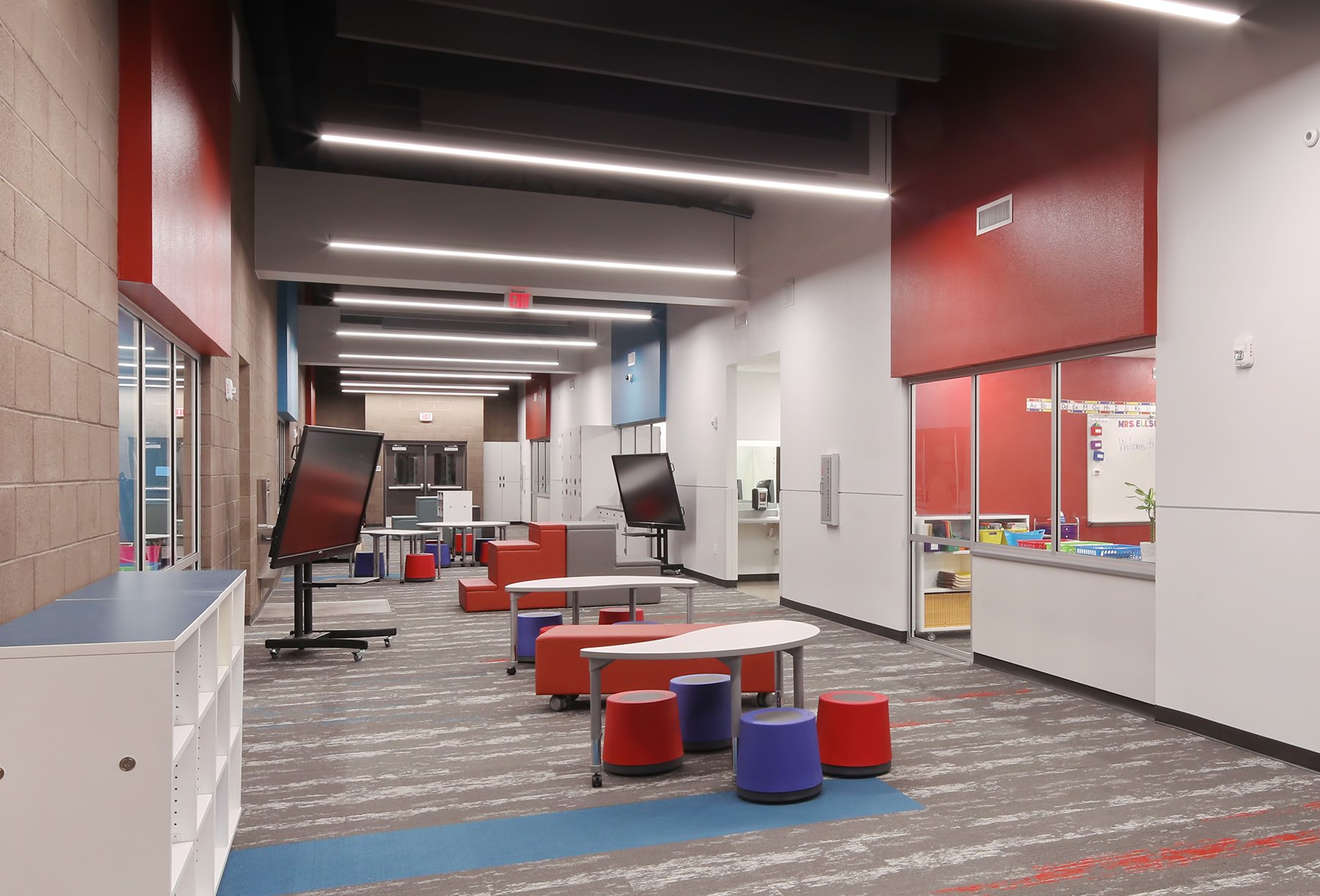
Warm colors such as red, orange, and yellow have been recognized as the preferred colors to maintain learners’ attention and stimulate their active participation. Consider using red in common areas where collaboration, conversation, and creativity are encouraged.
Related Article: How Does Red Enhance the Learning Environment?
color psychology of Blue
According to this study conducted by The University of British Columbia, which analyzed the effects of the color blue and red on 600 people between 2007-2008, red was deemed the most effective at enhancing our attention to detail, while blue is best at boosting our ability to think creatively. Based on this study and others, we know that red and blue both deserve a place in learning environments. It just depends on the nature of the learning taking place in each space.
use blue as a stimulant to:
- Increase productivity
- Create order
- Enhance cognitive abilities
- Open communication
- Extend perspective
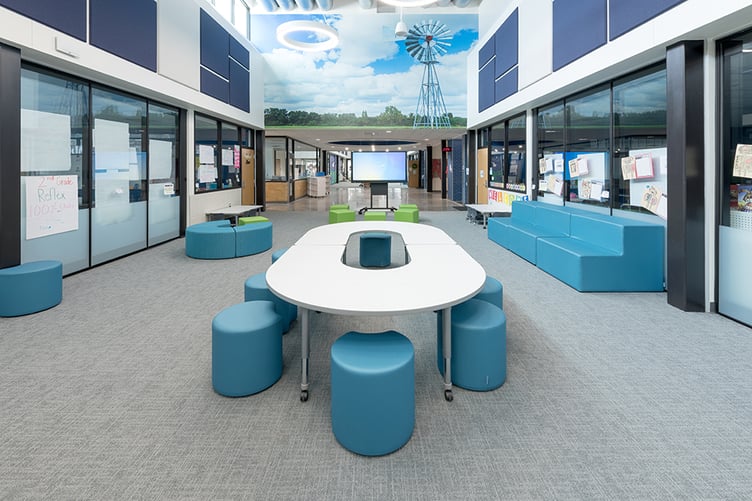
Cool, calm, and collected. Blue has been known to help regulate heartbeat and breathing. Consider adding various shades of blue soft seating to your calming corners to help balance racing minds.
Related Article: How Does Blue Enhance the Learning Environment?
color psychology of Yellow
What do you imagine when you think of the color yellow? Perhaps a bowl of fresh lemons, a spoonful of honey, or a field of sunflowers. Now, think about how this color makes you feel. As you wake in the morning, are you energized by the rising sun? Does it make you smile when you see your furry friend soaking up the rays pouring through the windows? My dogs always seem to find the best light in the house! How about the yellow emojis?! Would it give you the same warm fuzzies if it were any other color? Yellow is a vibrant hue that has the power to exude happiness, positivity, and life.
use yellow as a stimulant to:
- Grab attention
- Build emotional energy
- Encourage communication
- Wake up the nervous system
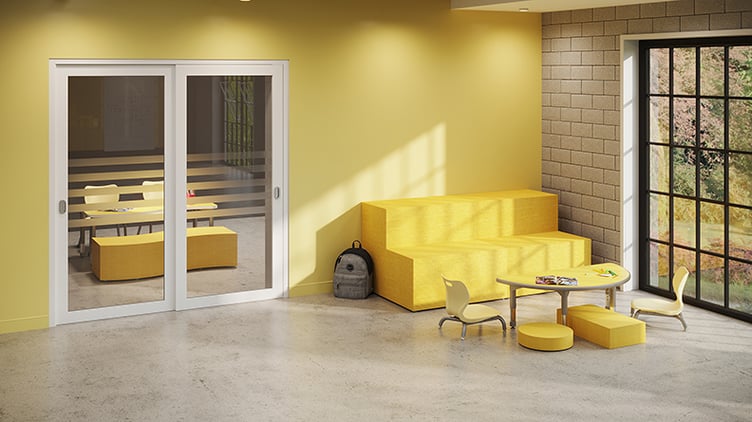
A person surrounded by yellow generally feels optimistic because the brain releases more serotonin when surrounded by this cheery color.
Related Article: How Does Yellow Enhance the Learning Environment?
color psychology of Purple
Purple is a beautiful mixture of red and blue: it's both warm and cool and combines the power and energy of red and the sadness and tranquility of blue. Shades of purple communicate originality, brilliance, and visionary thinking. Such 'purple' qualities are imperative for creativity. Take, for example, Prince's Purple Rain, and the 1982 Pulitzer Prize-winning Novel, The Color Purple, by Alice Walker.
use purple as a stimulant to:
- Calm the mind
- Boost mood
- Meditate + reflect
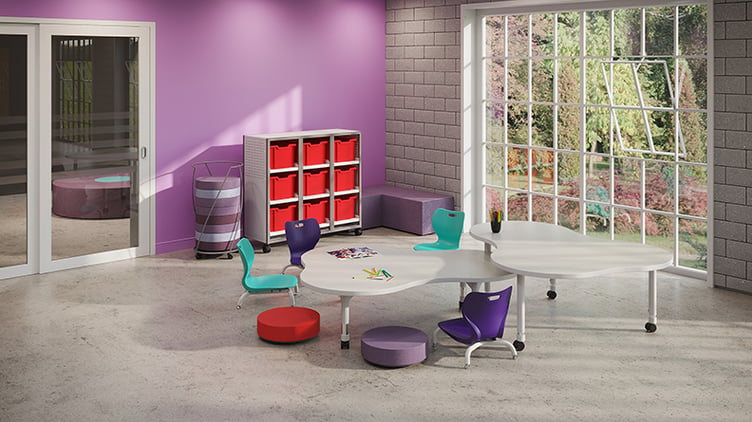
Balance the bold with a neutral work surface such as white or grey and consider these pops of color to make students feel alive and visually inspired.
Related Article: How Does Purple Enhance the Learning Environment?
color psychology of Orange
In the past, schools were built to meet basic functional and financial requirements. Uninspiring colors like beige, gray, and navy blue dominated most learning environments, and design was hardly a consideration. Today, modern educational institutions are more committed than ever to design spaces with purpose. Learning strategies and teaching strategies, color, layout, nature, and lighting, among other things, are all considered when designing spaces to improve teachers' and students' educational experiences through thoughtful aesthetic choices.
use orange as a stimulant to:
- Grab attention
- Uplift
- Rejuvenate
- Boost confidence
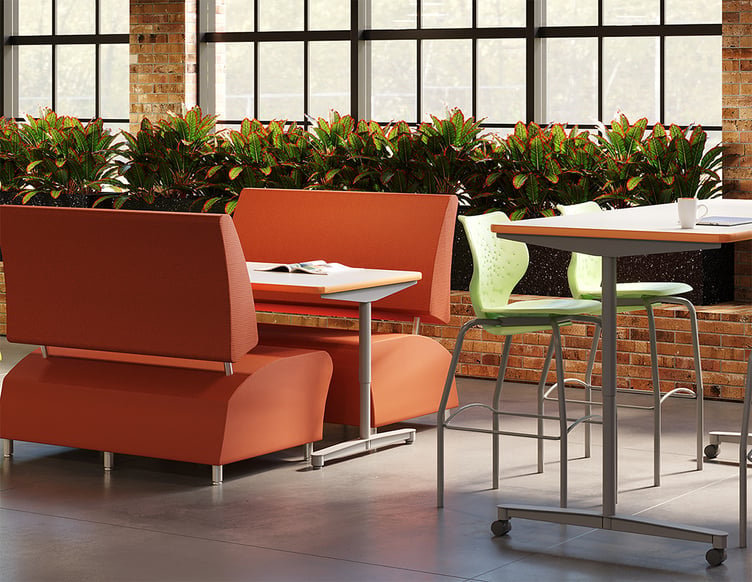
Because research shows that orange impacts appetite, a café would be a great place for this lively hue. Combine comfy lounge seating units and sleek high-top areas for a modern-looking space that will become the new hang-out space for studying and collaborating.
Related Article: How Does Orange Enhance the Learning Environment?
color psychology of Green
Green is all around us. It's a color that has long been associated with nature, tranquility, and peace and is arguably the most important color students should have access to in their learning environments. Exposure to live plants and the color green have a positive impact on visual and verbal creative thinking in classroom settings.
use green as a stimulant to:
- Focus
- Relax
- Inspire creativity
- Motivate
- Reduce fatigue
- Relieve stress
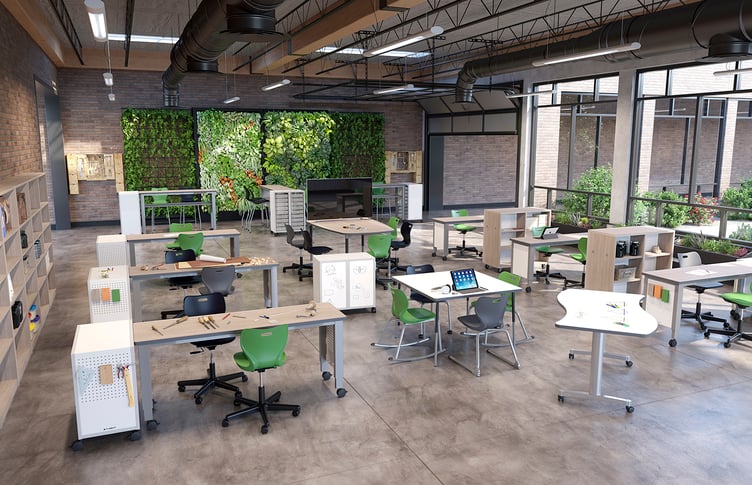
There are hundreds of studies that support the idea that experiences with nature boost academic learning and improve children's psychological and physical well-being. But what if your students do not have access to an outdoor classroom or the freedom to take a stroll outside? Luckily, even having a view of nature out of the window helps restore kids' attention, providing them the opportunity to reset their concentration.3
Related Article: How Does Green Enhance the Learning Environment?
1. Photo by Scott Webb on Unsplash
2. Adams FM, Osgood CE. A cross-cultural study of the affective meaning of color. J Cross Cult Psychol. 1973;4(2):135–156. [Google Scholar]
3. Li, D., & Sullivan, W. (2016). Impact of views to school landscapes on recovery from stress and mental fatigue. Retrieved 29 August 2022, from https://www.sciencedirect.com/science/article/abs/pii/S0169204615002571
